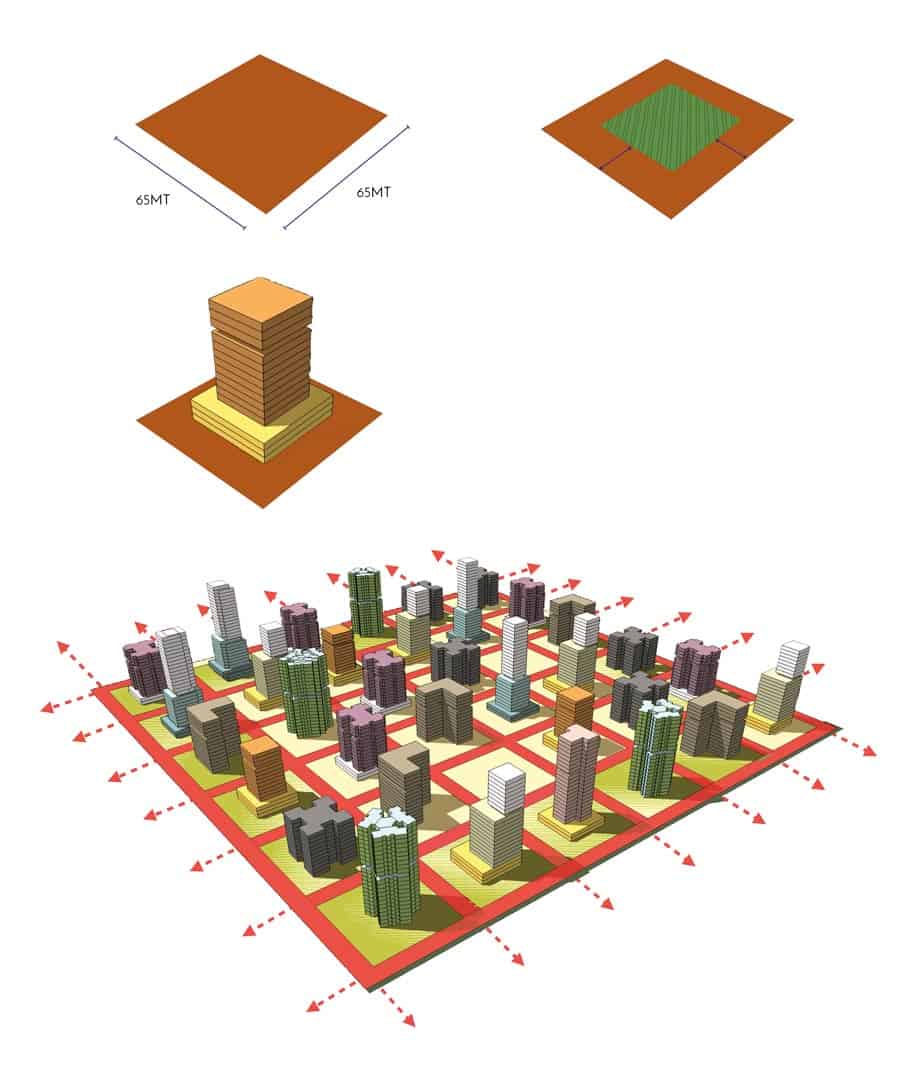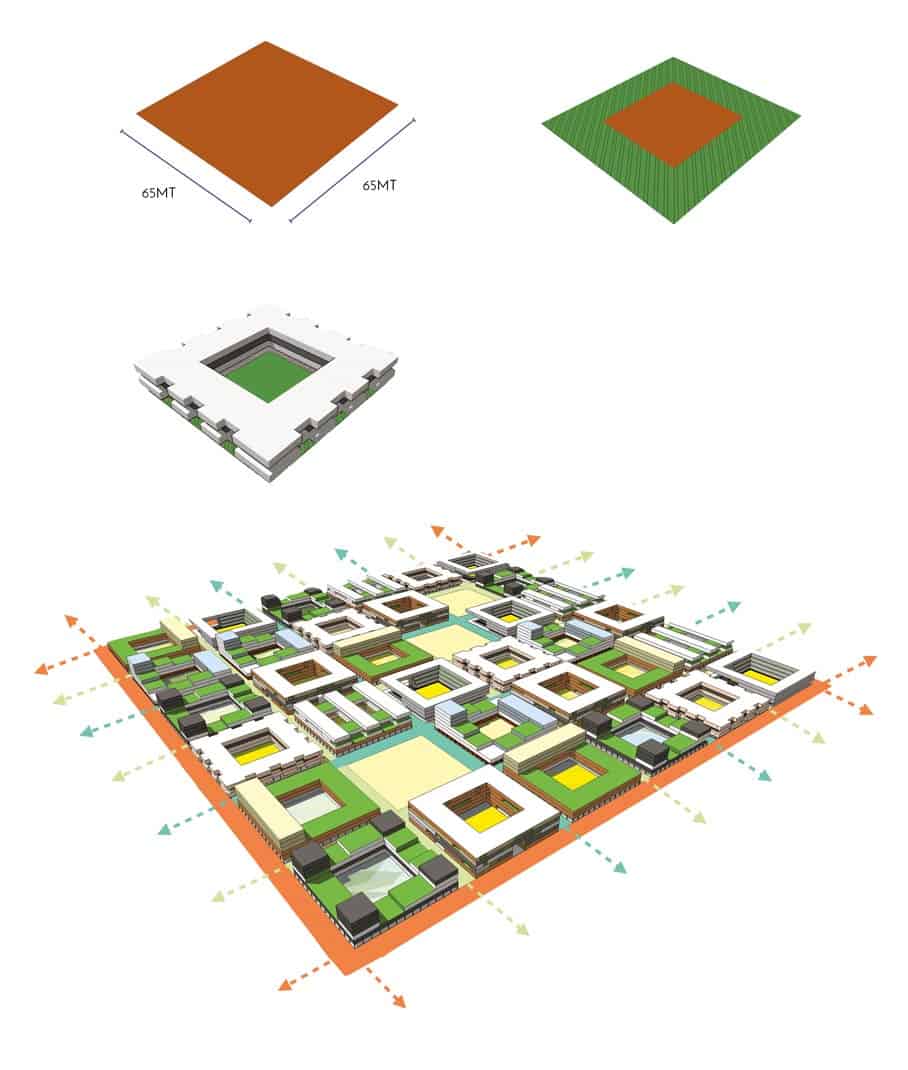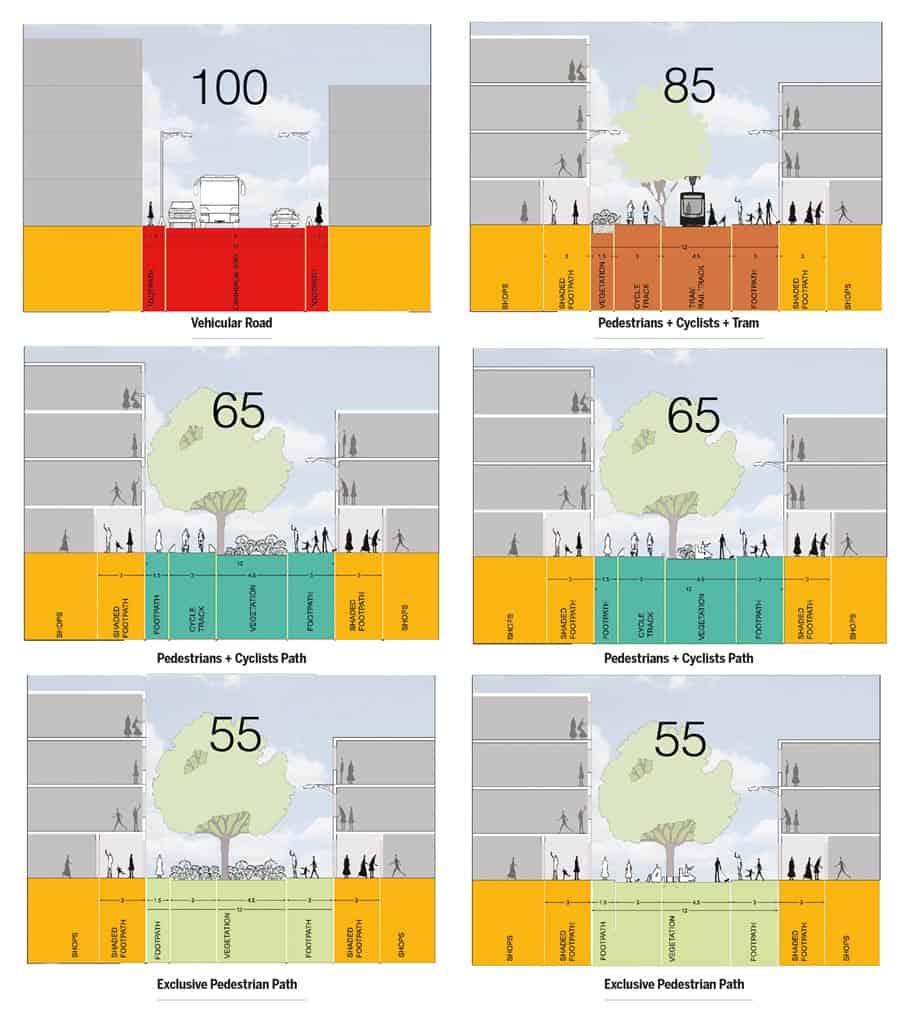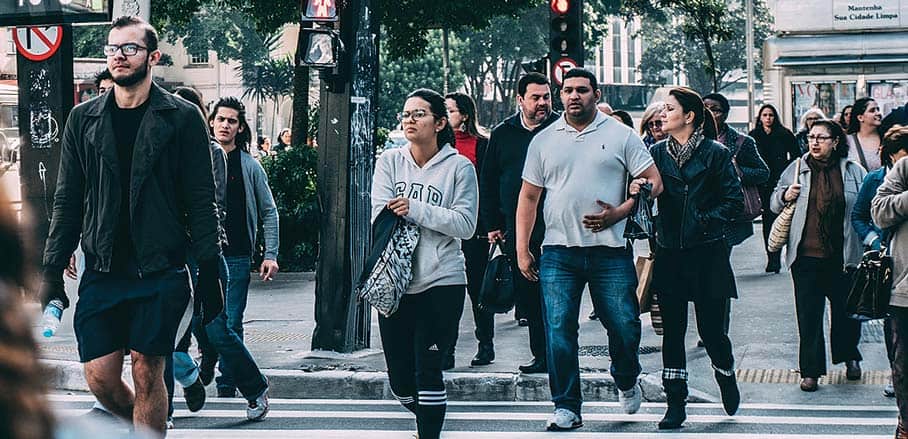Engineering the Perfectly Pedestrian City
Shyam Khandekar explains how cities can be built with humans as the focus of attention.
The earliest cities were pedestrian cities out of necessity really, because humans had few other means of movement: by carts, horses or mules. These cities were of a small scale; based on the scale of the human body. And while private life took place in private residences, the streets, squares and plazas were the places for a multitude of urban activities. They formed the ‘open-air living room’ for all the citizens. The buildings in turn responded to the public use of urban spaces by having a suitable and friendly interface with the streets and squares.
While cities began to change with the advent of the horse-drawn carriages, the real damage to the urban spaces began once the automobile started invading the city in large numbers. Suddenly the streets and public spaces, which were the podium for urban life, had to cater to the demand of the aggressive automobile. And, consequently, streets that were meant for pedestrians – to walk, gather and lounge – lost their function as places for urban interaction. So much technology has gone into cars that there really is no way the pedestrianised citizen can compete with the car.
Building Bye-Laws
As cars have ruled the streets, the streets have simply become conduits for noisy and polluting traffic; the buildings have just turned their backs to the streets. The earlier human interface between public spaces and buildings has been destroyed. The space allotted to pedestrians has been reduced to small edges of public space such as a sidewalk for getting from point A to B. The function of urban spaces for broader human activities has been utterly lost in cities with pervasive cars.
Over the decades, building laws and bye-laws have evolved, which take the car traffic as a given and the whole city design has been dictated by the needs of the car. This has resulted in massive investments in roads and parking infrastructure with the by-product of environmental (noise and air pollution) degradation and, in many societies, social segregation for those without cars. The damage to the urban fabric due to the automobile is in fact so great and growing that drastic measures need to be taken to restore the city to its ultimate users: the pedestrians.

This Illustration shows how the present bye-laws and dominance of cars lead to tall blocks on each urban site. The aerial view shows an urban area of 500 m. x 500 m. All streets are used by cars (red arrows) © SHYAM KHANDEKAR & MANALI PATIL
Back to the Future: The Case Study
Our study shows how to go back to a city designed mainly for pedestrians. In fact, it shows how we can go to the future to design cities for pedestrians. It shows that not only is such a city financially viable, but that it is also more affordable. That it costs less than our present cities, which are geared to the automobile. And it is healthier for its citizens, environmentally friendly, and socially inclusive.
The case study involves the development of a part of a large city based on the present bye-laws in India. The study shows the built scenario, which we can expect if, based on the present bye-laws, we build a series of plots in a city segment of one square kilometre.
The Pedestrian City: Designing With Renewed Bye-Laws
In the Pedestrian City, the bye-laws have been formulated first and foremost to take care of the well-being of the pedestrian. The bye-laws not only allow, but also state that there should be an excellent interface for pedestrians between the streets and the building. The buildings are pushed to the edge of the site and provide a good quality interface with the pedestrian-dominated public spaces around the building. The streets are spaces for a vast multitude of pedestrian activities for young and old, men and women, rich and poor.

This Illustration shows how new bye-laws based on the well-being of pedestrians can lead to more human-scaled blocks. The aerial view shows an area of 500 m. x 500 m. Light green arrows indicate streets which are exclusively pedestrian, light blue ones indicate streets where pedestrians share the space with cyclists and orange arrows indicate streets also with public transportation. © SHYAM KHANDEKAR & MANALI PATIL
Street Sections And Street Design: Economy Of Development
Except for incidental streets in which facilities are provided for a dedicated lane for public transportation, dedicated cycle paths and pedestrian spaces are provided throughout the Pedestrian City. The street space can be redesigned, as the illustrations below show, from conduits for three lanes of vehicular traffic to a haven for pedestrians young and old, women and men, poor and rich. Compared to the vehicular street paved for cars, these streets will be clearly more economical to build and on average the cost of infrastructure for the Pedestrian City will be one third less than for building vehicular roads.

The sections above show how the same street space in an automobile dominated city (coloured red, entitled Vehicular Road) costing say 100 monetary units, can in the Pedestrian City be used for a street with public transportation (coloured brown, costing 85 monetary units), for pedestrians and cyclists (coloured dark green, costing 65 monetary units) and exclusively pedestrians (coloured light green, costing 55 monetary units)
© SHYAM KHANDEKAR & MANALI PATIL
Conclusion
What the study shows is that an urban settlement based primarily on pedestrian movements is not only possible, but is also more economical for governments to execute.
What will need to be done is to change the building bye-laws to those based on primarily pedestrian movement, and to redesign the network of public spaces to make them into a pedestrian paradise for all. When properly designed and executed, the impact of Pedestrian Cities will make our cities:
- socially just and inclusive, since all public spaces will be accessible to all;
- environmentally sustainable, since the noise and air pollution caused by cars will be absent;
- healthier, since a better environment leads to more walking and will tackle the rising problem of obesity in urban populations;
- economically sensible, since the government will save greatly on building such cities and the citizens will save on the expense of private cars; and
- impacted by increased civic engagement and pride as more citizens meet one another in public spaces.
- Engineering the Perfectly Pedestrian City - 10. May 2022
